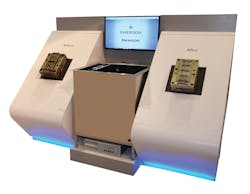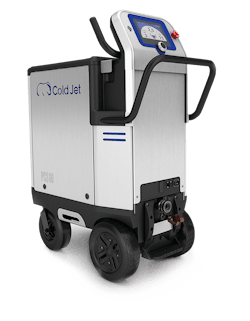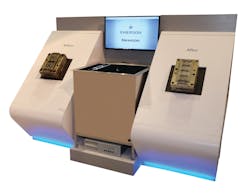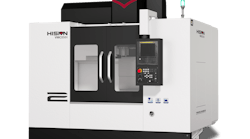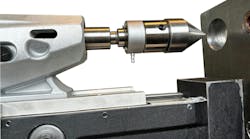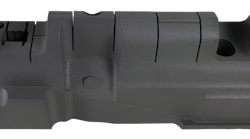There’s more than one way to clean a mold, and suppliers of dry-ice blasting equipment and ultrasonic cleaning tanks are keeping their products up to date with improvements designed to make the process as thorough and efficient as possible.
COLD JET
Cold Jet, a manufacturer of dry-ice blasting equipment used for non-abrasive, in-place mold cleaning and parts finishing, launched the PCS 60 dry-ice blaster in April. It will display the machine at K 2019 in Germany.
The company has four patents on the new machine, including one for its namesake particle control system (PCS), which precisely cuts dry ice into 28 different sizes of diamond-shaped particles in dimensions ranging from 0.3mm up to 3mm. The number 60 in the name is for the machine’s 60-pound dry-ice capacity.
“No machine on the market is capable of this degree of precision cutting,” said Steve Wilson, Cold Jet’s global business unit director for plastics, rubber and composites. “It cuts the dry ice into specific particle sizes, rather than grinding it. Machine users can select the size they need for their application. They can dial in the exact size they want, which allows them to save on ice and air.”
The 3mm pellets would likely be used for cleaning items with a thicker layer of residue, such as a screw or a “nasty mold,” he said. Large pellets would not be used on aluminum molds or on Class A surface molds, which often are used to manufacture parts for the automotive industry.
The PCS 60 is controlled from an intuitive 7-inch LCD color interface; the digital controls allow users to view and adjust blasting parameters and machine settings. The blaster also features programmable and password-protected recipes. This allows users to set and save blasting parameters, such as pressure, particle size and feed rate, which reduces future set-up times and ensures the right settings for each application.
The machine’s air system and its feeding system minimize air-pressure loss and dry-ice sublimation in the machine. This allows users to get the most out of their compressed air supply and reduce dry ice waste.
The PCS 60 is Internet of Things-enabled via Cold Jet’s Industry 4.0 solution, Cold Jet Connect. It offers remote monitoring and diagnostics. The machine can be integrated into an automated Industry 4.0 system through the use of an optional accessory package. The package enables the PCS 60 to be combined with a Cold Jet dry-ice production unit and a robot for continuous operation and fully automated blasting.
The machine weighs 251 pounds and is 39 inches long, 19 inches wide and 45 inches tall. It is mounted on wheels and has a braking system. Its blast pressure ranges from 20 pounds per square inch (psi) to 145 psi. The frame is made of an aluminum alloy, stainless steel and plastic.
“Previously, users had to buy two machines to do what the PCS 60 does,” Wilson said. “Lots of customers will want to trade in their machines to get this. It will make some of our product line obsolete.” The company intends to introduce the PCS 90, which will have 90 pounds of dry ice capacity, later this year.
EMERSON/BRANSON
Emerson has upgraded its Branson Flexline 2024, which is used to clean molds and mold plates.
Transducers convert electrical energy to sound energy to create cavitation. They are normally mounted at the bottom of cleaning tanks.
“This is not a new product, but a new configuration of an existing product from our Flexline called the Flex 2024,” said Nitin Phadnis, director of precision cleaning for Branson at Emerson. “The tank is configured so that the transducers can be mounted on one or both sides of the cleaning tank.
“But with the construction of molds, having cavitation rise from the bottom up does not give as good a cleaning,” Phadnis said. “Side mounting provides better cavitation to clean molds.”
Cavitation is the rapid formation and collapse of tiny bubbles, or cavities, in a cleaning solution to remove grime, including burnt polymers and mold release agents, from the mold surface. Turbulence created by the cavitation improves cleaning by allowing the cleaning solution to penetrate into tiny holes and crevices, including internal cooling channels in the mold.
Bruce Adams, senior staff reporter
Contact:
Cold Jet LLC,
Loveland, Ohio, 513-831-3211, www.coldjet.com
Emerson Electric Co.,
Danbury, Conn., 203-796-0400, www.Emerson.com/Branson
